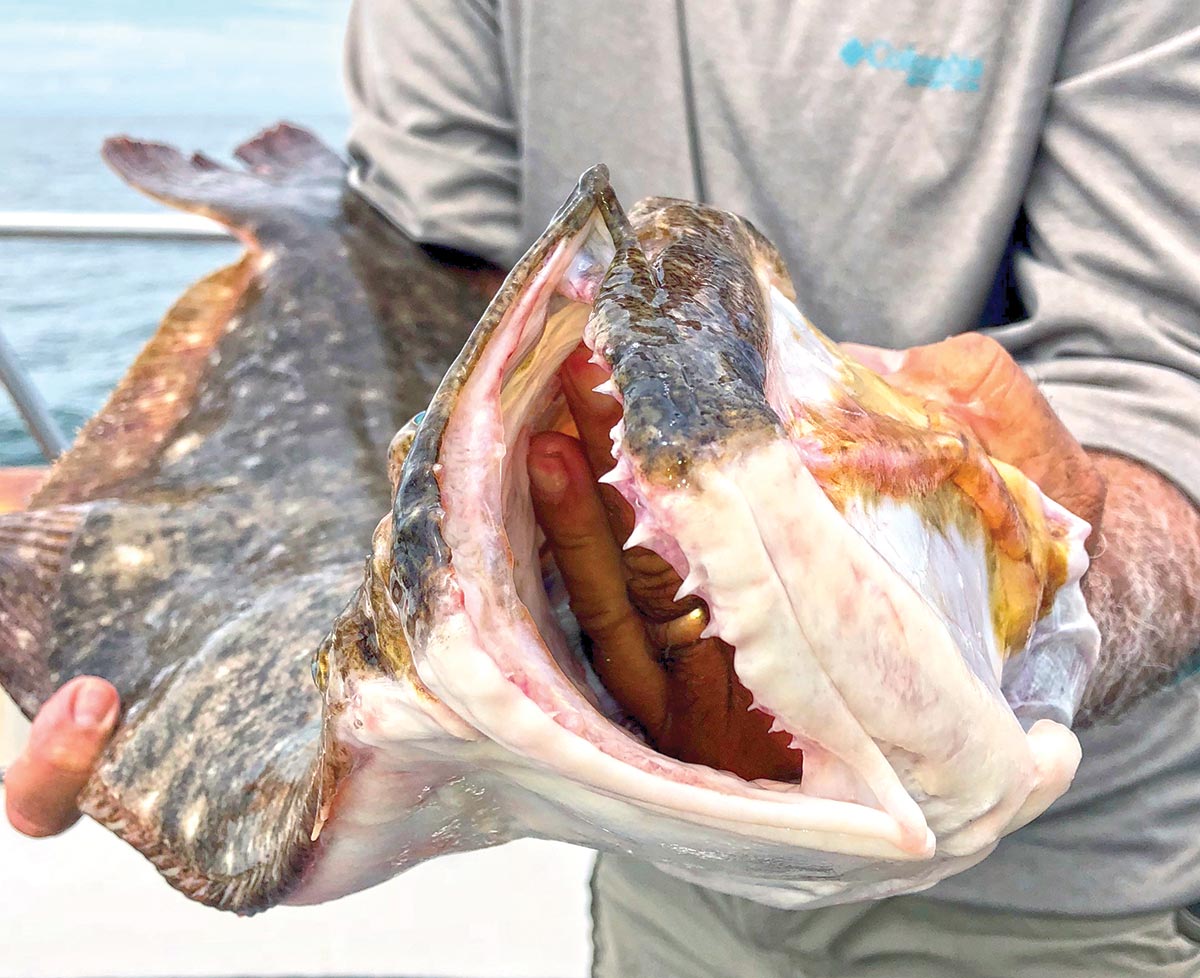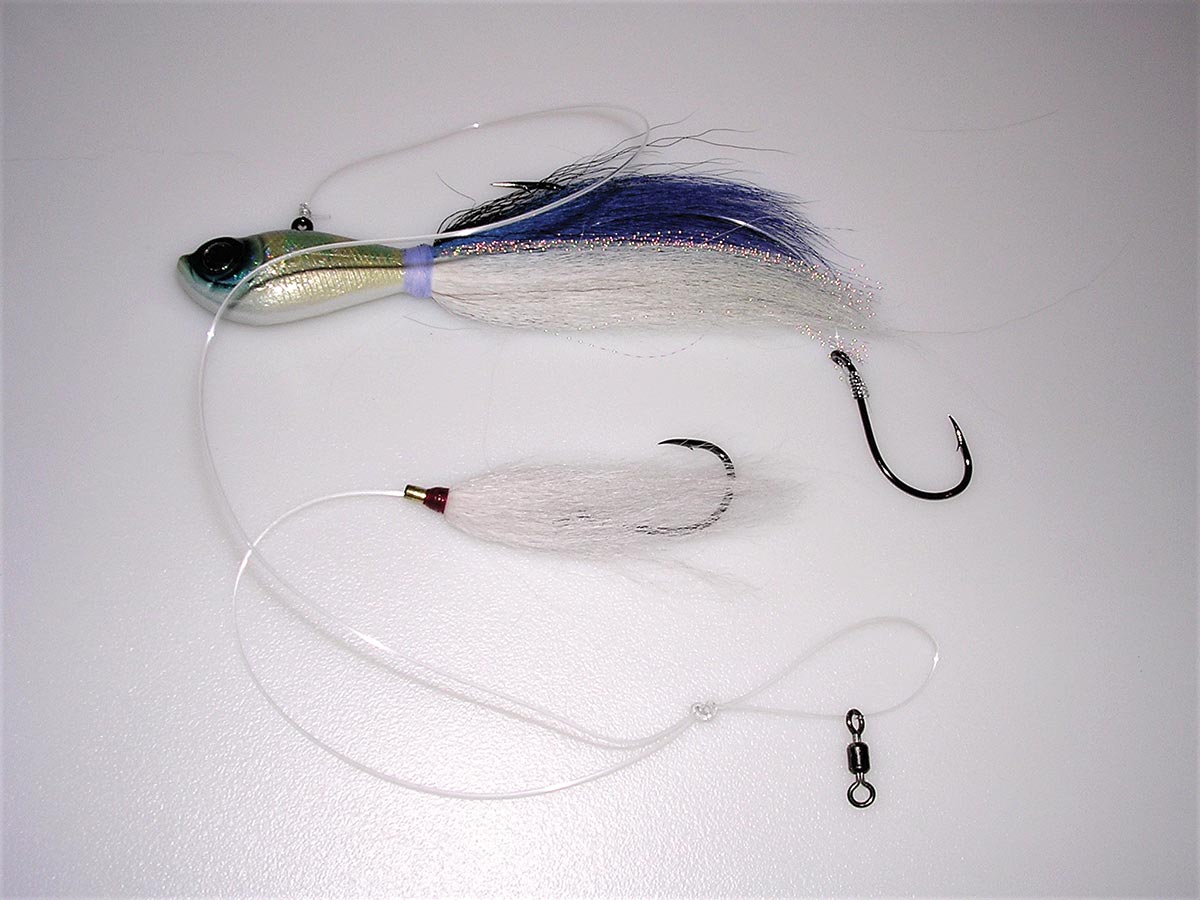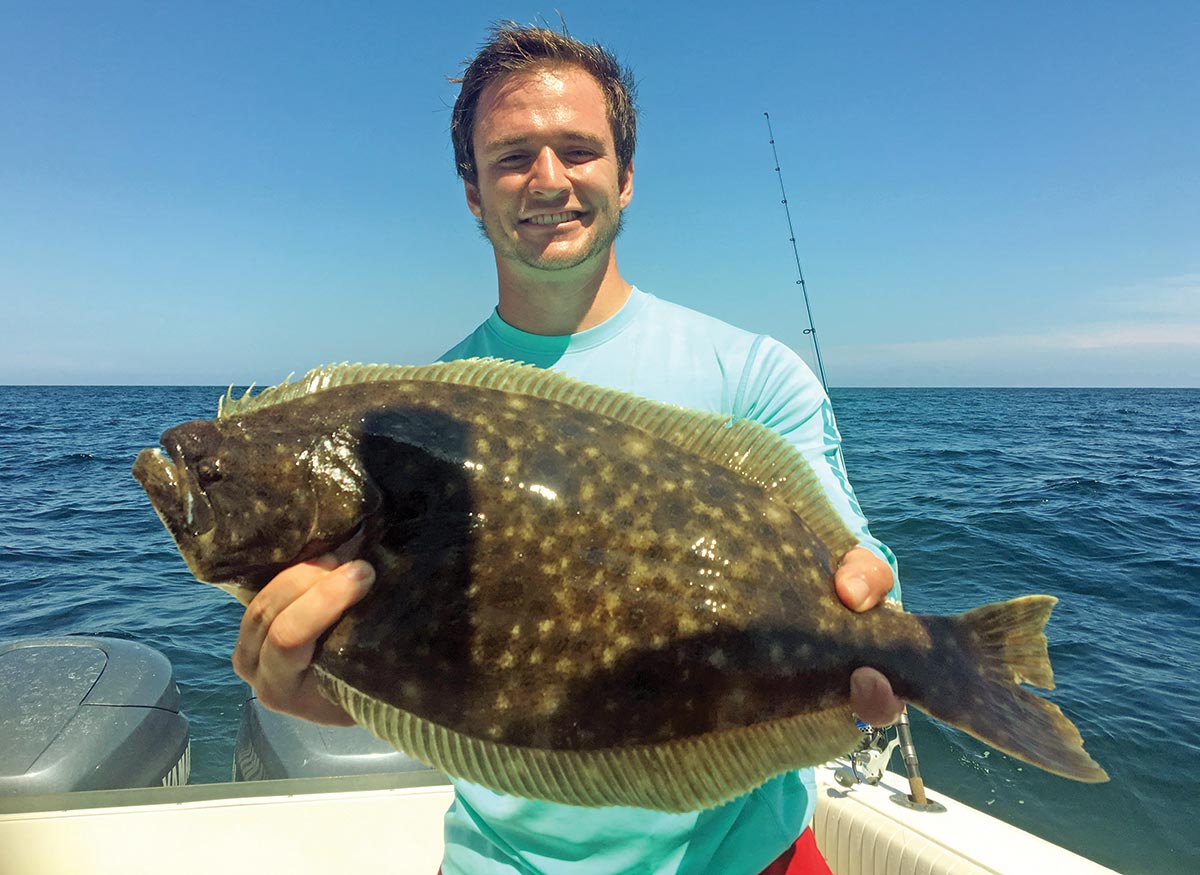
A good day of fluking begins with uncovering those golden pieces of structure.
It is estimated that 90 percent of New Jersey’s private boat fishing trips are to the 15 artificial reef sites off of the New Jersey coast line. The charts of these reefs can be found on the New Jersey Division of Fish and Wildlife’s website (Google NEW JERSEY ARTIFICIAL REEF SITES). These charts list and give the GPS coordinates of the vessels, tanks, subway cars, bridge rubble, and other structures deployed over the years.
Keep in mind though, the given coordinates are not always exactly correct, so sometimes one has to search around to find the true location of the piece. Once found, save this information into your chartplotter for future excursions. To varying degrees, all of this structure is productive for fluke, tog, sea bass, triggerfish, and other structure-oriented predators. They all seek out creatures that colonize the reef structure in search of their own food preferences. The more crevices a structure has, the more bait rich it will become, and the more the predators will seek out those environs to hunt. Utilizing these charts by placing the known coordinates of the structures into your GPS is a good starting point for learning how to fish the reefs productively.
Unfortunately, because this information is widely available, these pieces tend to get fished rather heavily and can become depleted as the season for each species goes on. The reality, though, is that there are many undocumented structures on every artificial reef that have not been catalogued.
The Unknown Pieces
Oceanic benthic structure is by no means a stable system as it is constantly modified and shifted from various processes. All heavy structures dropped on the sandy bottom will gradually subside into the sand bottom. Some pieces that once had high relief off the oceanic floor may be only projecting a few feet above the sandy bottom now. As this structure can be gradually lost as far as fish producing ability, it is important to have a number of sites to fish when you venture out to the reefs.
Storms and decay can change the reef structures as well in several different ways. A once intact steel ship, for example, may gradually decay and portions of the vessel may break free and form separate bottom pieces at varying distances away from the main vessel. Each breakaway piece forms a separate microsystem of marine life often capable of supporting a good number of the target species.
Saltwater’s corrosive effects can also change the very nature of the structures themselves. For example, the stainless steel subway cars dropped on some of our reefs drastically changed within several years of resting on the sand. The rivets and bolts holding the cars together corroded and the once intact cars became sheets of stainless steel resting on top of one another. In contrast, divers have found the redbird subway cars still intact after nearly two decades of saltwater immersion on the ocean bottom.
Another process that occurs once a structure is deployed is that it is quickly colonized by slime, barnacles, corals, mussels, soft sponges, and various other attaching marine life. These creatures change the very nature of the structure itself and transform it from a lifeless steel structure to a bait rich ecosystem that attracts the predators we seek to catch. In general the longer a structure is deployed the more marine life if will contain, and a once poorly producing piece can become quite productive over time.
Occasionally the opposite occurs, particularly if the piece subsides into the sand or deteriorates to the point of no longer providing hard substrate for a marine community to thrive.
Ever-Changing Bottom

Much change occurs to structures when hurricanes or major storms impact the reef structure. Quite a few effects are observed. One example is the splitting of ships such as happened to the 564-foot destroyer USS Arthur W Radford on the deepwater reef 30 miles out which divers report has been split into three sections now. It is not unusual for structure on our reefs to move or become dismembered by the massive power of storm driven waves and currents. Storms will often break superstructure off of vessels and create entirely new “wrecks” – in fact, I’ve discovered the broken off wheelhouse on one wreck lying beside the original wreck, a piece that has produced many large specimens over the years.
Besides vessels or structure being broken apart, the shearing effect of the silt laden storm driven currents can sandblast marine growth off of such pieces and make some previous productive pieces less productive until the marine growth and bait colonies are able to reestablish themselves. This is also one factor that can affect how productive one portion of a wreck may be as more protected portions or portions away from storm driven currents can provide much more stable bait systems.
A third effect we see is that structure can move from its previous GPS coordinates. While very compact heavy structure like tanks are less likely to move particularly once they subside into the sandy bottom, other structures like wrecks and subway cars may surprisingly move quite a distance. Keep in mind too, that there is deployed structure such as rocks that were deployed from hopper barges. Many of these deployments are not listed on the reef charts on the Division of Fish and Wildlife’s website.
Finding the Gold
If anglers are lucky enough to be able to find the new structure, these pieces can be like gold mines as far as your ability to bring home a nice catch. Many captains are surprised when they first fish our artificial reefs when they go to the GPS numbers as given on the reef charts and can’t find that piece of structure. The numbers given on the New Jersey reef charts are right on in some cases and a bit off in others. The ones less easily found tend to be the most productive as they experience less fishing pressure.
There are many structures on our reefs that have no reported GPS coordinates so it is up to you to try to find them. While it may seem like a daunting task, they can be found both by dumb luck and also by actively searching for them. As the reef patches are dynamic in nature, new pieces are being produced each year.
One way to find them is to make parallel drifts several yards apart in areas that you know have or have had nearby structure. For example, I’ve found superstructural pieces that have broken off the main wreck that are more productive than the main wreck itself! These pieces can be found by keeping an eye on your fishfinder as the drift progresses.
Many anglers catch fish while drifting near known wrecks, not knowing the reason they catch fish there is because there is additional structure lying on the floor that harbor a bait community that has drawn in the fish we are seeking. An astute captain will find and mark these new pieces as repeated excursions to those structures can make for productive days on many successive trips to those reefs.

The Astute Angler
Making parallel drifts too can help you locate structure that has moved from its original location. The Red Bird subway cars that were dropped on our reefs are a structure that is prone to moving, particularly on our reefs that are in water less than 70 feet or so. I’ve often fished these cars one at a time to find the target species for that day. Some of the subway cars are missing from their previous locations but have been found as much as 100 feet away.
Often times too one can find productive structural fields by keeping an eye on the fishfinder even when traversing sandy bottom. Here I’ve found two types of structure, one being mussel beds, which will encrust on any type of hard bottom; the other are natural hard bottom areas on some of our reefs, which will eventually become colonized by mussel beds. By themselves and because of the other bait systems that take up residence, mussel beds are quite productive for fishing. These will be felt by anglers onboard as a roughened bottom and can often be seen on the fishfinder as well due to their slight elevations off the bottom.
Another productive find is on natural bottom with a lot of shells or other broken natural marine structures. Here baitfish may feed or squid and may use these areas to deposit their eggs when they move inshore in the spring. These areas can be very productive as these baits take up residence, but because of the transient nature of the bait’s presence, they may be only productive for short periods during certain times of the year.
Shells large enough can be seen on the fishfinder, their presence also given away by the snagging of shell pieces by the anglers on board. The squid can be seen as vertical blue streaks on most fishfinders. Fluke will feed heavily on the squid while the squid are attempting to lay their eggs on the bottom structures.
Spending the time and becoming a more astute observer can totally change the outcome of your fishing day. Record the “gold mines” that you discover and visit them on the days you fish on the reefs. Don’t equate the size of the piece or the relief off the bottom with its ability to hold large fish. Even some very small low lying pieces can be very productive if they have enough crevices to support a good bait system.
Keep your eyes on your fishfinder and I will bet you will find new pieces each year!
The author runs Vetcraft Sportfishing out of Bree-Zee-Lee Yacht Basin in Cape May, NJ.



